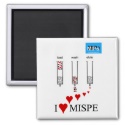|
|
Reference type: Journal
Authors: Valero-Navarro A, Gómez-Romero M, Fernández-Sánchez JF, Cormack PAG, Segura-Carretero A, Fernández-Gutiérrez A
Article Title: Synthesis of caffeic acid molecularly imprinted polymer microspheres and high-performance liquid chromatography evaluation of their sorption properties.
Publication date: 2011
Journal: Journal of Chromatography A
Volume: 1218
Issue: (41)
Page numbers: 7289-7296.
DOI: 10.1016/j.chroma.2011.08.043
Alternative URL: http://www.sciencedirect.com/science/article/pii/S0021967311012301
Abstract: In the current work, a molecularly imprinted polymer (MIP) has been synthesised and used to enable the extraction of a naturally-occurring antioxidant from complex media. More specifically, we describe the first example of a caffeic acid (CA) MIP which has been synthesised in the form of well-defined polymer microspheres, and its use for the extraction of CA from fruit juice sample. The CA MIP was synthesised by precipitation polymerisation using 4-vinylpyridine as functional monomer, divinylbenzene-80 as crosslinker and acetonitrile:toluene (75/25, v/v) as porogen. The particle sizing and morphological characterisation of the polymers was carried out by means of scanning electron microscopy (narrow particle size distribution; -5 and 1.5 μm particle diameters for the MIP and NIP [non-imprinted polymer], respectively) and nitrogen sorption porosimetry (specific surface areas of 340 and 350 m2 g-1, and specific pore volumes of 0.17 and 0.19 cm3 g-1 for the MIP and NIP, respectively). The polymers were evaluated further by batch rebinding experiments, and from the derived isotherms their binding capacity and binding strength were determined (number of binding sites (NK) = 0.6 and 0.3 mmol g-1 for the MIP and NIP, respectively, and apparent average adsorption constant (KN) = 10.0 and 1.6 L mmol-1 for the MIP and NIP, respectively). To evaluate the molecular recognition character of the MIP it was packed into a stainless steel column (50 mm x 4.6 mm i.d.) and evaluated as an HPLC-stationary phase. The mobile phase composition, flow rate, and the elution profile were then optimised in order to improve the peak shape without negatively affecting the imprinting factor (IF). Very interesting, promising properties were revealed. The imprinting factor (IF) under the optimised conditions was 11.9. Finally, when the imprinted LC column was used for the selective recognition of CA over eight related compounds, very good selectivity was obtained. This outcome enabled the direct extraction of CA in commercial apple juice samples with recoveries in excess of 81% and, rather significantly, without any need for a clean-up step prior to the extraction
Template and target information: caffeic acid, CA
Author keywords: Molecularly imprinted polymers, precipitation polymerisation, caffeic acid, HPLC, adsorption isotherm
|


 MI cryptic logo mug
MI cryptic logo mug







 multi MIPs logo mousemat
multi MIPs logo mousemat







 I love MISPE magnet
I love MISPE magnet






